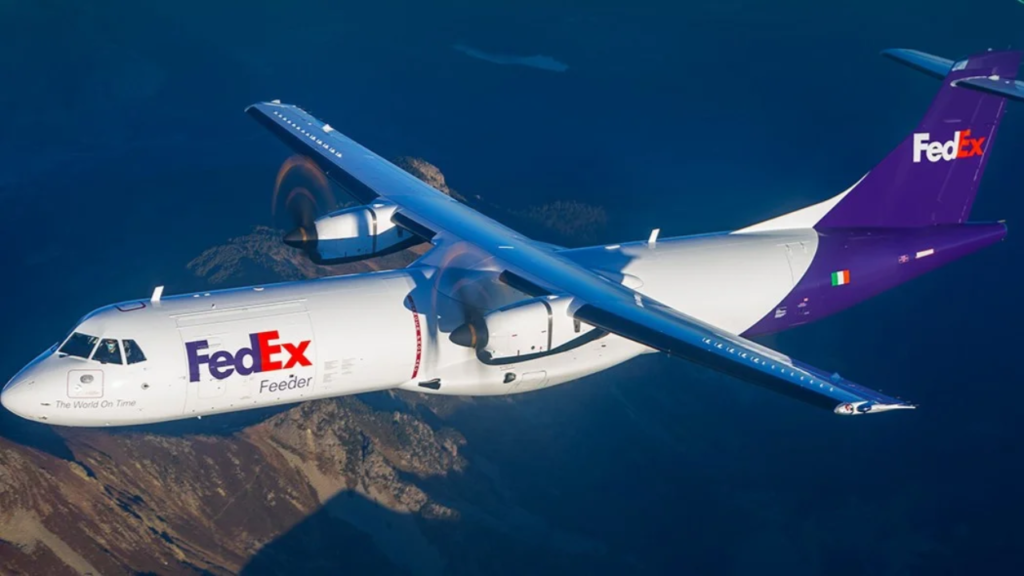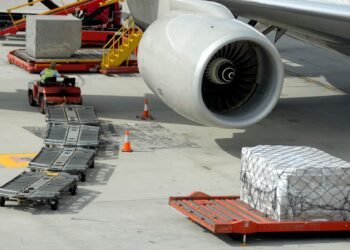FedEx Corp. has announced plans to acquire eight more Boeing 777 freighters and extend the retirement of its tri-engine MD-11 aircraft as part of its strategy to meet rising demand for international freight services, the company revealed in its third-quarter financial results.In a separate announcement, ATR, a French aircraft manufacturer, confirmed that FedEx will also purchase 10 additional ATR 72-600 turboprop freighters, set for delivery between 2027 and 2029.The decision to extend the MD-11 fleet’s retirement until 2032, up from the previously planned 2028, is driven by the need for additional capacity in response to growing global freight demand. FedEx’s Chief Financial Officer, John Dietrich, explained that the company is also purchasing two used 777 freighters from an undisclosed party. This expansion brings the total number of Boeing 777 freighters FedEx operates to 57, with two more deliveries scheduled this year.
Dietrich attributed the fleet upgrade to a combination of factors, including the need to replace aging aircraft with more modern, efficient models and favorable pricing from Boeing. FedEx is also looking to capitalize on projected growth in international heavy freight, driven by its strategy to target high-yield markets.
“We’re seeing strong demand, particularly in the international economy sector, which led us to extend the life of the MD-11s,” Dietrich said. “These planes are largely depreciated but still have useful life left and can support our growth strategy. We also have the flexibility to retire them early if necessary.”
The addition of more widebody freighters marks a significant shift from FedEx’s previous strategy of downsizing its fleet in response to a slowdown in parcel demand. Last year, the company removed 31 aircraft, including nine MD-11s and 22 Boeing 757s.

A Strategic Shift: FedEx’s ‘Tricolor’ Model
FedEx’s decision to expand its fleet is tied to its “Tricolor” strategy, designed to streamline its air network and compete more aggressively for deferred air cargo business. The strategy includes segregating the company’s fleet into three networks: the Purple network for express parcel shipments, the Orange network for heavy freight like pharmaceuticals and electronics, and the White network for low-priority shipments handled through commercial passenger aircraft.
This approach, FedEx says, is aimed at improving asset utilization, increasing cargo density, and boosting profitability. In the third quarter, the Express segment saw a 17% increase in adjusted operating income, with international economy package volume surging by 48%.“Tricolor is driving better asset utilization,” said Raj Subramaniam, FedEx President and CEO. “We’re seeing year-over-year improvements in both payloads and aircraft density, which are key metrics for our strategy.
Feeder Fleet Expansion
In addition to expanding its widebody freighter fleet, FedEx is also upgrading its regional feeder network. The new order for 10 ATR 72-600 turboprops builds on a previous commitment to purchase 30 of the aircraft, with 23 delivered so far. These smaller aircraft will support regional routes and complement FedEx’s larger freighters by connecting smaller cities with hub airports. The ATR 72-600s will replace older models and are capable of carrying up to 10 tons of cargo.
Looking Ahead: A Leaner, More Profitable FedEx
Despite the significant fleet expansion, FedEx remains committed to controlling capital expenditures, with a target of $1 billion in aircraft spending for the upcoming fiscal year. Dietrich stressed that these acquisitions fit within the company’s broader goal to operate a leaner organization while increasing shareholder value.
“While we’re investing in these additional aircraft, we’re staying within our capital expenditure targets,” Dietrich said. “These acquisitions are aligned with our efforts to improve efficiency and profitability.
FedEx’s bold moves come as the company seeks to strengthen its position in the growing international freight market, where it aims to capture a larger share of the $80 billion global airfreight industry.





